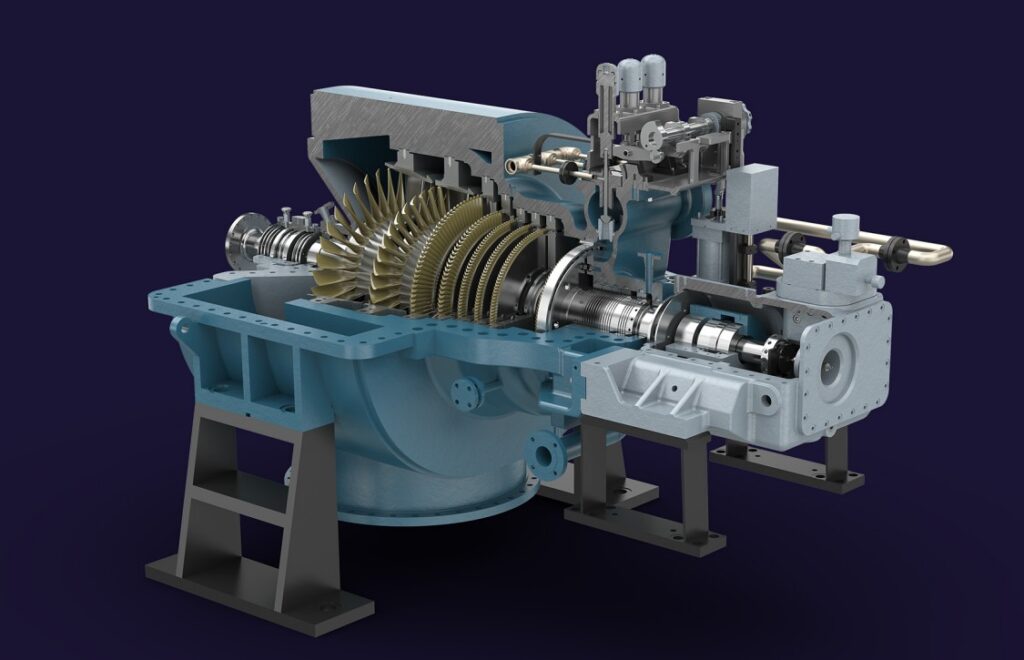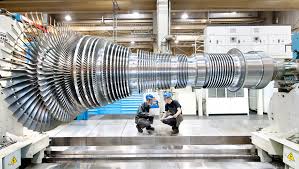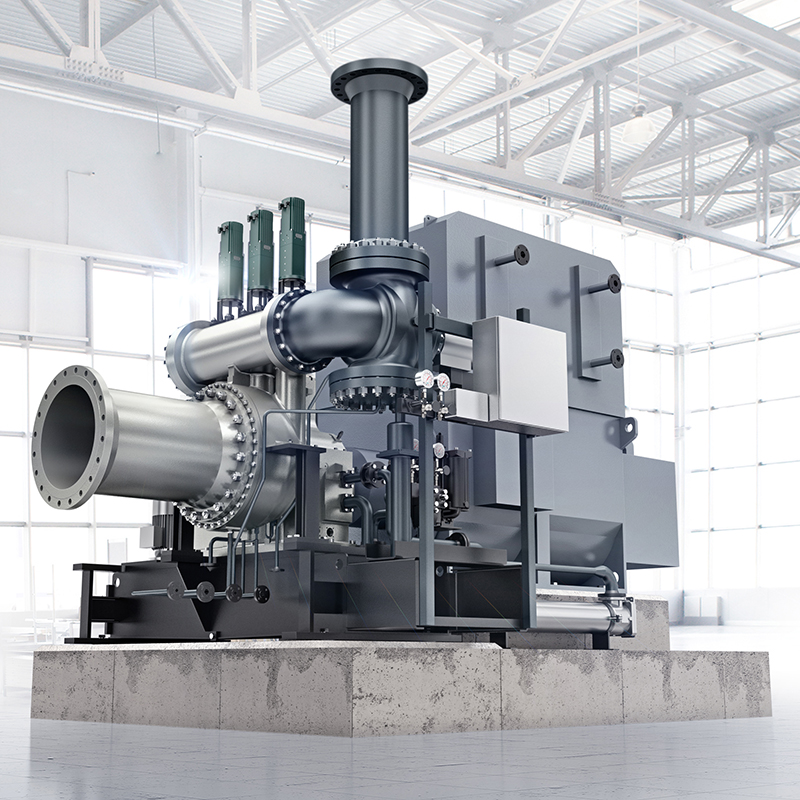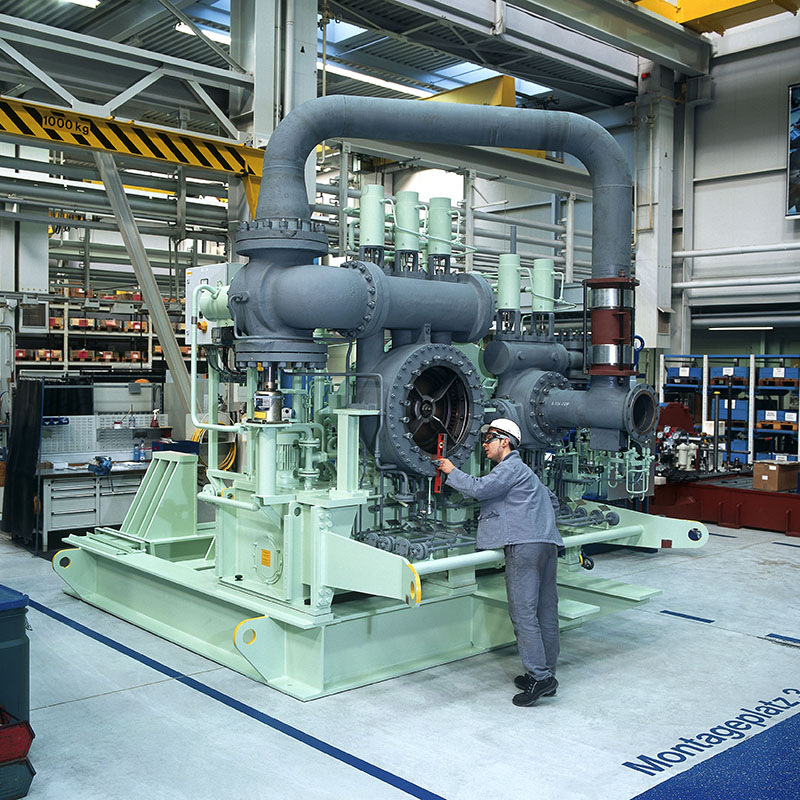FACTORS IMPACTING MAINTAINABILITY - SPECIAL STEAM TURBINES

some critical factors that can affect or impact the maintainability of special steam turbines:
Steam Quality: The quality of the steam used in special steam turbines can significantly impact their maintainability. Impurities in the steam can cause corrosion or other damage to components, leading to increased downtime and maintenance costs. Recommendations include monitoring steam quality and conducting regular water treatment to reduce impurities.
Operating Conditions: The operating conditions of special steam turbines can also impact their maintainability. High temperatures, pressures, and other environmental factors can cause wear and tear on components, leading to more frequent maintenance requirements. Recommendations include conducting regular monitoring of operating conditions and taking corrective actions when necessary.
Maintenance Procedures and Practices: The maintenance procedures and practices used for special steam turbines can also impact their maintainability. Poor maintenance practices can result in missed inspections, inadequate lubrication, or incorrect repairs, leading to increased downtime and costs. Recommendations include developing a comprehensive maintenance plan, using qualified and experienced personnel, and ensuring that all maintenance is properly documented.
Component Access: The accessibility of components within special steam turbines can also impact their maintainability. Poor access to critical components can lead to increased downtime and higher maintenance costs. Recommendations include designing steam turbines with easy access to critical components, conducting regular inspections to identify any accessibility issues, and making necessary modifications to improve access.
Quality of Materials: The quality of materials used in the construction of special steam turbines can have a significant impact on their maintainability. Poor quality materials can result in increased wear and tear, corrosion, or other damage, leading to more frequent repairs and maintenance requirements. Recommendations include selecting high-quality materials that are resistant to wear, corrosion, and other damage, and ensuring that the materials are compatible with the specific operating conditions.
Training and Experience of Personnel: The training and experience of personnel involved in maintaining special steam turbines can also impact their maintainability. Lack of training or experience can lead to mistakes or incorrect maintenance procedures, leading to increased downtime and costs. Recommendations include providing regular training and development opportunities for maintenance personnel, ensuring that they are familiar with the specific steam turbine design and operating conditions, and implementing a rigorous quality control process.
Data Analysis and Condition Monitoring: The use of data analysis and condition monitoring techniques can help to identify potential issues with special steam turbines before they result in downtime or costly repairs. Recommendations include implementing a condition monitoring program, regularly collecting and analyzing data from steam turbines, and using the results to inform maintenance and repair decisions.
Overall, it is important to develop and implement a comprehensive maintenance program that addresses each of these critical factors to ensure the continued reliable operation of special steam turbines. This program should include regular inspections, maintenance, and repairs, as well as ongoing monitoring and analysis of the steam turbine’s performance. By following these recommendations, the maintainability of special steam turbines in both new and existing plants can be significantly improved.

WHY, WHEN, WHERE, WHAT, WHICH, HOW TO APPLY MAINTAINABILITY STUDIES & ANALYSIS
To apply maintainability studies and analysis in special steam turbines and improve maintainability, reliability, availability, and safety in existing plants and new projects for power generation plants, as well as the oil, gas, and petrochemical industries, let’s explore the details of why, when, where, what, which, and how to apply these studies:
Why apply maintainability studies and analysis?
- Improve Reliability: Maintainability studies identify potential failure points, weaknesses, and vulnerabilities in special steam turbines, allowing for targeted improvements to enhance reliability and prevent unexpected failures.
- Enhance Availability: By identifying and addressing maintenance-related issues, maintainability studies aim to reduce downtime and increase the availability of special steam turbines, ensuring continuous power generation and operational efficiency.
- Increase Safety: Thorough maintainability analysis ensures that maintenance tasks are carried out safely, minimizing the risk of accidents, malfunctions, and hazards to personnel and equipment.
- Optimize Cost and Resources: By optimizing maintenance activities, identifying critical components, and planning preventive measures, maintainability studies help allocate resources efficiently and reduce overall maintenance costs.
When to apply maintainability studies and analysis?
- Design Phase: Maintainability studies should be conducted during the design phase of special steam turbines to optimize their maintainability, considering factors such as component accessibility, ease of inspection, repairability, and modularity. Early application ensures that design features align with maintainability objectives.
- Existing Plants: Maintainability studies can be applied at any stage in the lifecycle of existing plants to assess and improve the maintenance strategies and procedures for special steam turbines. This includes routine maintenance, inspections, overhauls, and retrofits.
Where to apply maintainability studies and analysis?
- Design and Engineering: Apply maintainability studies during the design and engineering process of special steam turbines to influence factors such as component layout, accessibility, ease of maintenance, and the use of standard or modular designs.
- Maintenance Planning: Utilize maintainability analysis to develop effective maintenance plans, schedules, and procedures. Determine the frequency of inspections, preventive maintenance activities, and predictive maintenance techniques specific to special steam turbines.
What to analyze in maintainability studies?
- Component Accessibility: Evaluate the accessibility of critical components in special steam turbines for maintenance tasks, including inspection, removal, and replacement. Assess the ease of access and the need for specialized tools or equipment.
- Maintenance Procedures: Analyze the existing maintenance procedures and workflows for special steam turbines. Identify opportunities to streamline processes, reduce maintenance time, and minimize human error.
- Spare Parts and Inventory: Evaluate the availability, adequacy, and suitability of spare parts for special steam turbines. Develop an efficient inventory management system to ensure timely availability of critical components.
Which techniques can be used for maintainability studies and analysis?
- Failure Mode and Effects Analysis (FMEA): Conduct FMEA to identify potential failure modes, their effects, and the criticality of each failure mode in special steam turbines. Prioritize maintenance efforts based on the identified risks.
- Reliability Centered Maintenance (RCM): Apply RCM methodology to determine maintenance requirements based on the criticality of equipment and the consequences of failures.
- Task Analysis: Perform task analysis to identify the sequence of maintenance activities, potential hazards, and opportunities for improvement in special steam turbine maintenance procedures.
How to apply it?
Define the Scope: Clearly define the scope of the maintainability study, including the specific objectives, the targeted steam turbine systems or components, and the timeframe for analysis.
Data Collection: Gather relevant data on the performance, maintenance history, failure records, and operational conditions of the special steam turbines. This data can come from plant maintenance records, equipment manuals, industry standards, and interviews with maintenance personnel.
Identify Critical Components: Identify the critical components of the special steam turbines that significantly impact reliability, maintainability, and safety. These may include turbine blades, rotor assemblies, casings, valves, control systems, and auxiliary equipment. Focus the analysis on these components.
Failure Mode and Effects Analysis (FMEA): Apply FMEA to identify potential failure modes, their causes, effects, and associated risks. Assess the criticality of each failure mode by considering factors such as safety, environmental impact, and economic consequences.
Prioritize Maintenance Activities: Prioritize maintenance activities based on the FMEA results. Focus on addressing high-risk failure modes and critical components. Develop maintenance strategies that include preventive, predictive, and corrective maintenance tasks.
Analyze Maintenance Procedures: Evaluate the existing maintenance procedures and workflows for special steam turbines. Identify potential inefficiencies, bottlenecks, and safety hazards. Determine if procedures need to be revised or optimized to improve the efficiency and safety of maintenance activities.
Component Accessibility: Evaluate the accessibility of components for maintenance tasks. Assess the ease of component removal, replacement, and inspection. Identify any design features or accessibility limitations that hinder maintenance activities and propose design modifications if necessary.
Spare Parts and Inventory Management: Evaluate the availability, adequacy, and suitability of spare parts for critical components. Develop an effective inventory management system to ensure that necessary spare parts are readily available, reducing downtime.
Condition Monitoring and Predictive Maintenance: Implement or enhance condition monitoring systems for special steam turbines. This can involve installing sensors to monitor parameters such as temperature, vibration, and pressure. Use predictive maintenance techniques to detect early signs of potential failures and perform maintenance proactively.
Training and Skill Development: Provide training programs for maintenance personnel to enhance their knowledge and skills in maintaining special steam turbines. Focus on safety procedures, proper maintenance techniques, and equipment-specific training.
Continuous Improvement: Establish a monitoring system to track the effectiveness of the implemented maintenance strategies. Regularly review maintenance data, failure records, and operational performance to identify areas for continuous improvement and optimization.
Collaboration and Documentation: Involve cross-functional teams, including engineers, maintenance personnel, operators, and manufacturers, in the maintainability studies. Collaborate on findings, recommendations, and implementation plans. Document the findings, analysis, and actions taken for future reference.

PROCEDURES, ACTIONS, STUDIES, MITIGATION, RECOMMENDATIONS TO APPLY MAINTAINABILITY IN ENGINEERING & DESIGN
To apply maintainability factors in the design and engineering of special steam turbines and improve maintainability, reliability, availability, and safety in existing plants and new projects for power generation, oil, gas, and petrochemical industries, the following procedures, actions, studies, mitigations, and recommendations can be considered:
Establish Design Guidelines: Develop comprehensive design guidelines that incorporate maintainability considerations from the early stages of the special steam turbine project. These guidelines should outline the requirements and expectations for maintainability, reliability, availability, and safety in the design and engineering process.
Component Selection and Standardization: Select components that are known for their reliability, availability, and ease of maintenance. Emphasize standardization in the selection of components, interfaces, and maintenance practices to simplify maintenance activities, reduce downtime, and improve interchangeability of parts.
Design for Accessibility: Ensure that critical components of the special steam turbine are easily accessible for maintenance tasks such as inspections, repairs, and replacements. Consider the placement, arrangement, and sizing of components to facilitate safe and efficient access for maintenance personnel.
Modular Design: Adopt a modular design approach for the special steam turbine. This allows for easier replacement of components or subsystems, minimizing downtime during maintenance or repairs. Design modules with standardized interfaces to simplify integration and ensure interchangeability.
Consider Maintenance Friendliness: Incorporate maintenance-friendly features in the design of the special steam turbine. This includes features such as removable panels, access hatches, inspection ports, and easy-to-read labels and markings for components. Design for ease of disassembly and reassembly procedures, minimizing the need for specialized tools or equipment.
Failure Mode and Effects Analysis (FMEA): Conduct FMEA studies during the design phase to identify potential failure modes, their causes, and their effects on maintainability, reliability, availability, and safety. Prioritize actions based on the criticality of failure modes and implement design improvements or mitigations accordingly.
Reliability Centered Maintenance (RCM): Apply RCM principles to determine maintenance requirements based on the criticality of equipment and the consequences of failures. Develop effective maintenance strategies that include preventive, predictive, and corrective maintenance tasks tailored to the special steam turbine’s design.
Incorporate Condition Monitoring Systems: Integrate condition monitoring systems into the design of the special steam turbine. This allows for real-time monitoring of key parameters such as temperature, vibration, and pressure. Proactive monitoring and early fault detection enable timely maintenance interventions, reducing the risk of unexpected failures.
Built-in Diagnostics: Include built-in diagnostic capabilities in the special steam turbine design. This allows the turbine to detect and diagnose faults or anomalies, providing maintenance personnel with valuable information for targeted maintenance actions.
Consider Environmental Factors: Assess the environmental conditions in which the special steam turbine will operate and design appropriate measures to mitigate their impact on maintainability, reliability, and safety. This includes considerations for temperature, humidity, corrosive atmospheres, and other factors that may affect component performance.
Collaboration and Knowledge Sharing: Foster collaboration between design engineers, maintenance personnel, and operators to share knowledge and experiences. Conduct regular reviews and feedback sessions to gather insights for continuous improvement of design and engineering practices.
Lessons Learned and Documentation: Document lessons learned from previous projects and maintenance experiences related to special steam turbines. Maintain a knowledge base that captures maintenance best practices, case studies, and successful strategies for improving maintainability, reliability, availability, and safety.

